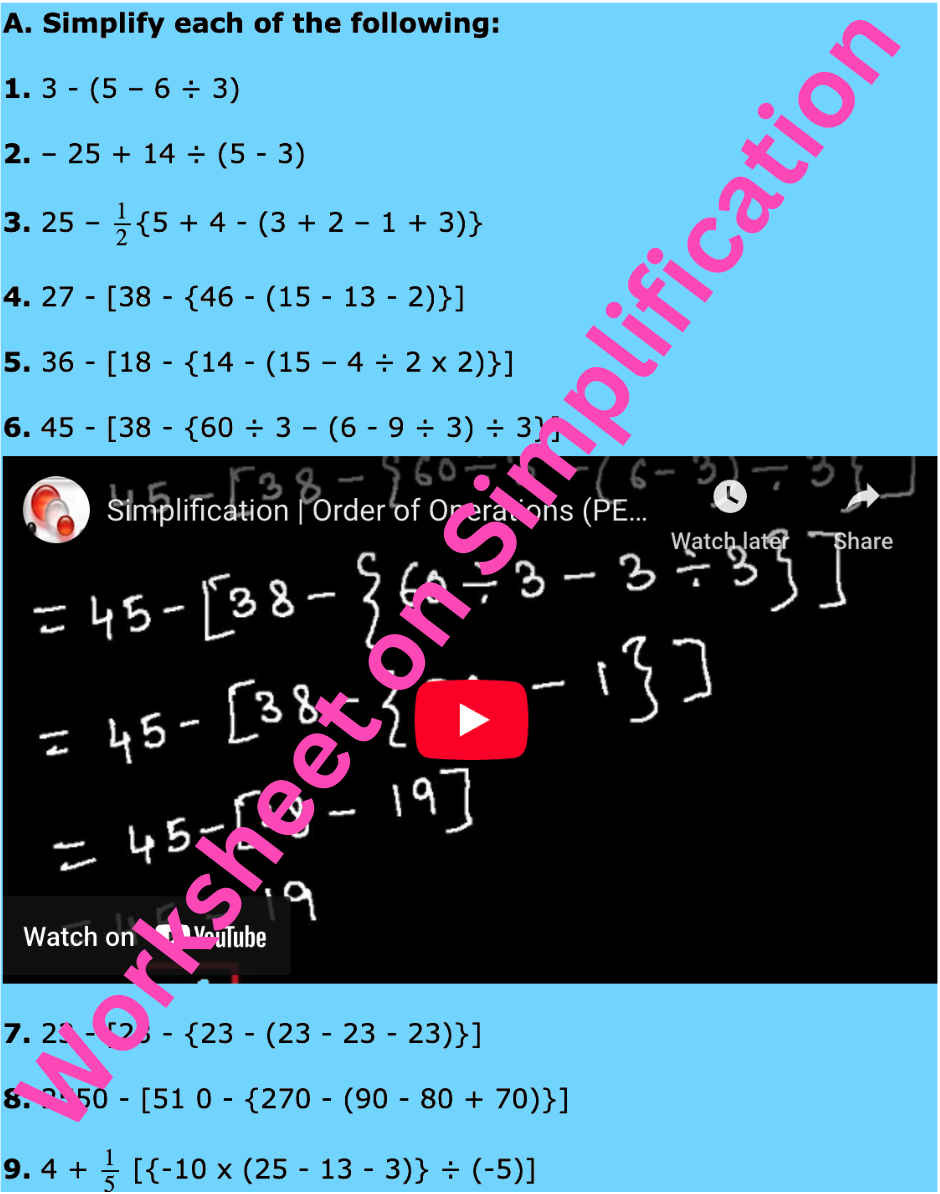Word Problems on Quadratic Equations by Factoring
We will learn how to solve Word Problems on quadratic equations by factoring.
1. The product of two numbers is 12. If their sum added to the sum of their squares is 32, find the numbers.
Solution:
Let the numbers be x and y.
As their product is 12, we get xy = 12 ..................... (i)
According to the question, x + y + x2 + y2 = 32 ..................... (ii)
From (i), y = 12x
Putting y = 12x in (ii), we get
x + 12x + x2 + (12x)2 = 32
⟹ (x + 12x) + (x + 12x)2 - 2 x ∙ 12x = 32
⟹ (x + 12x)2 + (x + 12x) - 56 = 0
Putting x + 12x = t,
t2 + t - 56 = 0
⟹ t2 + 8t – 7t – 56 = 0
⟹ t(t + 8) - 7(t + 8) = 0
⟹ (t + 8)(t - 7) = 0
⟹ t + 8 = 0 or, t – 7 = 0
⟹ t = -8 or, t = 7
When t = -8,
x + 12x = t = -8
⟹ x2 + 8x + 12 = 0
⟹ x2 + 6x + 2x + 12 = 0
⟹ x(x + 6) + 2(x + 6) = 0
⟹ (x + 6)(x + 2) = 0
⟹ x + 6 = 0 or, x + 2 = 0
⟹ x = -6 or, x = -2
When t = 7
x + 12x = t = 7
⟹ x2 - 7x + 12 = 0
⟹ x2 - 4x - 3x + 12 = 0
⟹ x(x – 4) - 3(x – 4) = 0
⟹ (x - 4)(x - 3) = 0
⟹ x - 4 = 0 or, x - 3 = 0
⟹ x = 4 or 3
Thus, x = -6, -2, 4, 3
Then, the other number y = 12x = 12−6, 12−2, 124, 123 = -2, -6, 3, 4.
Thus, the two numbers x, y are -6, -2, or -2, -6, or 4, 3 or 3, 4.
Therefore, the required two numbers are -6, -2 or 4, 3.
2. An association has a fund of $195. In addition that, each member of the association contributes the number of dollars equal to the number of members. The total money is divided equally among the members. If each of the members gets $ 28, find the number of members in the association.
Solution:
Let the number of members be x.
Total contributions from them = $ x2 and the association has a fund of $ 195.
According to the problem,
x2 + 195 = 28x
⟹ x2 - 28x + 195 = 0
⟹ x2 - 15x - 13x + 195 = 0
⟹ x(x - 15) - 13(x - 15) = 0
⟹ (x - 15)(x - 13) = 0
Therefore, x = 15 or 13
There are 15 or 13 members in the association.
Note: Two answers are acceptable in this case.
Quadratic Equation
Introduction to Quadratic Equation
Formation of Quadratic Equation in One Variable
General Properties of Quadratic Equation
Methods of Solving Quadratic Equations
Examine the Roots of a Quadratic Equation
Problems on Quadratic Equations
Quadratic Equations by Factoring
Word Problems Using Quadratic Formula
Examples on Quadratic Equations
Word Problems on Quadratic Equations by Factoring
Worksheet on Formation of Quadratic Equation in One Variable
Worksheet on Quadratic Formula
Worksheet on Nature of the Roots of a Quadratic Equation
Worksheet on Word Problems on Quadratic Equations by Factoring
From Word Problems on Quadratic Equations by Factoring to HOME PAGE
Didn't find what you were looking for? Or want to know more information about Math Only Math. Use this Google Search to find what you need.
Recent Articles
-
Counting Numbers from 1 to 50 | Match the Number | Missing Numbers
Apr 04, 25 03:46 PM
In counting numbers from 1 to 50, recognize the numbers, count and then join the numbers in the correct number order. Here we mainly need eye-hand coordination to draw the picture and maintain the num -
Counting Eleven to Twenty with Numbers and Words |Numbers from 11 - 20
Apr 04, 25 03:21 PM
Counting eleven to twenty with numbers and words are explained below. One ten and one more is eleven. Eleven comes after ten. One ten and two more is twelve. Twelve comes after eleven. -
5th Grade BODMAS Rule Worksheet | PEMDAS | Order of operations|Answers
Apr 03, 25 03:11 PM
In 5th Grade BODMAS Rule Worksheet you will get different types of problems on mathematical expressions involving different operations, mathematical expression with 'brackets' and 'of' and simplifying… -
Worksheet on Simplification | Simplify Expressions | BODMAS Questions
Apr 03, 25 02:58 PM
In worksheet on simplification, the questions are based in order to simplify expressions involving more than one bracket by using the steps of removal of brackets. This exercise sheet -
Divisible by 2 Video |Test of Divisibility by 2 Trick| Rules| Examples
Apr 03, 25 10:25 AM
A number is divisible by 2 if the digit at unit place is either 0 or multiple of 2. So a number is divisible by 2 if digit at its units place is 0, 2, 4, 6 or 8.





New! Comments
Have your say about what you just read! Leave me a comment in the box below. Ask a Question or Answer a Question.